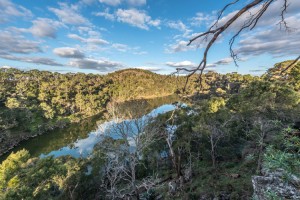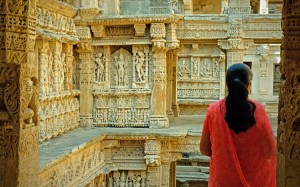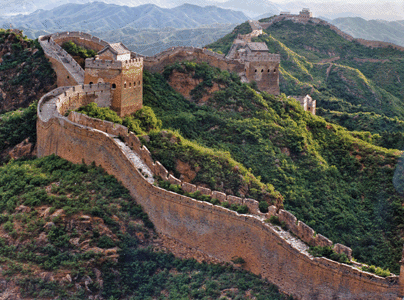Spotlight on Australia: Budj Bim
Friday, June 25th, 2021
Lake Surprise fills a volcano crater at Budj Bim National Park in southeastern Australia.
Credit: Peter (licensed under CC BY-SA 2.0)
Australia is famous for its unique culture, metropolitan cities, and unusual wildlife, among other things. Each week, this seasonal feature will spotlight one of Australia’s many wonders.
The inactive volcano and cultural site Budj Bim made history when, in 2019, it became the first World Heritage site listed exclusively for its value to Aboriginal culture. Such sites are places of unique cultural or natural importance as designated by the United Nations Educational, Scientific and Cultural Organization (UNESCO).
Budj Bim, once known as Mount Eccles, is located in southeastern Australia. The overlapping craters of Budj Bim hold lakes in which Aboriginal people maintained systems of aquaculture (the raising of water animals and plants) for thousands of years. Budj Bim means High Head in the language of the Gunditjmara people (also called the Dhauwurd Wurrung) of southwestern Victoria state. Budj Bim sits about 170 miles (270 kilometers) west of Melbourne. It is part of the 20,700-acre (8,370-hectare) Budj Bim National Park (formerly Mount Eccles National Park).
Gunditjmara tradition holds that Budj Bim is part of the body of an ancient creator being, who was revealed to Aboriginal people in an eruption around 30,000 years ago. The last known eruption of Budj Bim occurred about 8,000 years ago. Starting at least 6,600 years ago, the Gunditjmara people began creating a system of channels and dams to trap eels and other fish among the rock formations of Budj Bim. The result was an aquaculture system that provided plentiful food, and permanent Aboriginal settlements were established at nearby Lake Condah and Lake Gorrie. European settlers arrived in the area in the 1830’s.
Budj Bim—named Mount Eccles by European settlers—became a protected area in 1926 and a national park in 1960. Mount Eccles National Park was renamed Budj Bim National Park in 2017. The area is popular for camping, hiking, and picnicking.





